books
Film Art: An Introduction
Textbook written in collaboration with Kristin Thompson and Jeff Smith.
Twelfth edition, New York: McGraw-Hill Education,
2019.
 This
book, first published in 1979, was an effort to give undergraduates an orientation
to film aesthetics. It offers, I think, the most detailed outline of the various
techniques of the medium. Just as important, and the main reason we wrote the
book, it places an emphasis on the film as a whole. This
book, first published in 1979, was an effort to give undergraduates an orientation
to film aesthetics. It offers, I think, the most detailed outline of the various
techniques of the medium. Just as important, and the main reason we wrote the
book, it places an emphasis on the film as a whole.
Many film primers don’t go beyond itemizing techniques.
We try to show how the whole film is the most pertinent and proximate context
for understanding how the techniques work. It isn’t enough just to recognize
low angles or a match-on-action; we have to understand what they’re doing
in the scene, and the roles they play across the entire movie. The book also
introduces some doses of film history, in the belief that all techniques gain
their significance in particular historical circumstances.
The book is available in various translations:
Brazilian Portuguese (São Paulo: Unicamp and the University of São Paulo, 2014);
Chinese (pirated: Taipei: Yuan Liou, 1992; Shanghai: Wen Yi Chubanshe,
1992; authorized: Taiwan: McGraw‑Hill International Ltd., 1996; Beijing: Peking University Press, 2014);
Czech (Prague: Akademie múzických umění v Praze, 2012);
Turkish (Ankara: Deki Basım Yayım Ltd., 2012);
Polish (Warsaw: Wydawnictwo Wojciech Marzec, 2010);
Vietnamese (NXB Giáo Dục, 2008);
Greek (Athens: National Bank Cultural Foundation, 2006).
Spanish (Barcelona: Paidós, 2006);
Persian (Tehran: Markaz, 2000);
French (Brussels: De Boeck,1999);
Hungarian (Budapest: Hungarian Film Institute, 1997);
Korean
(Seoul: Irongua Shilchon, 1994);
Italian, Slovenian, and Japanese
translations are in progress.
February 2019 • McGraw-Hill Education
paperback ISBN 1260485129
[go
to Amazon]
[more on Film
Art, including essays from past editions]

Film History: An Introduction
Textbook written with Kristin Thompson (first-named
author). Fourth edition. New York: McGraw-Hill Education, 2018.

full sizeKristin Thompson and I grew concerned that film history textbooks didn’t reflect the growing scholarship in the field, particularly on early film and non-Western film. Too often U.S. books relied chiefly on films which had distribution here, forgetting that many outstanding films don’t get access to American audiences. Most textbooks also tended to ignore the primary sources, both print and film. (For example, most books didn’t use frame enlargements to illustrate the films but relied instead upon production stills.) So we decided to write a history text. It couldn’t be comprehensive or definitive, but we thought we could offer something different.
Just as Film Art tried to present systematic
ways to analyze films, Film History suggested how historians did
their work, providing an introduction on historiography and sidebars on discoveries
and revisionist work. And we tried to get outside the canon and look at films
and filmmakers not previously discussed. (Before the current wave of interest
in Kiarostami and Hou Hsiao‑hsien, for instance, we tried to signal their
importance.) Over several years we traveled to archives around the world to watch
films and gather materials. It was by far the most draining book we have written,
and we nearly gave up. We’re pleased, though, that some people find it
useful. It’s
been translated into Italian (Milan: Castoro, 1998), Chinese (Taiwan: McGraw-Hill
International Ltd.), Korean (Seoul: Vision and Language, 2000), Persian
(unauthorized: Tehran: Markaz), and Czech.
May 2018 • McGraw-Hill Education
paperback ISBN 1259870359
[go to Amazon]

Planet Hong Kong: Popular Cinema and the Art of Entertainment
Second edition. 2011.

This is a revised and updated version of the 2000 edition mentioned below. It adds a chapter on the recent history of the Hong Kong film industry and a chapter on artistic trends over the same period—genres, stylistic options, and the emerging importance of three filmmakers: Wong Kar-wai, Stephen Chow, and Johnnie To. There are also two more “interludes,” one devoted to the Infernal Affairs trilogy, the other to Johnnie To’s crime films as carrying forward particular traditions in local filmmaking. The pdf file includes over 440 illustrations, nearly all in color.
299 pages, black & white and color photographs
January 2011 • Irvington Way Institute Press
PDF ISBN 978-0-9832440-0-4
[more information; order PDF]

Poetics of Cinema
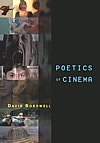
full size
This is a collection of fifteen essays, some already published and others I’ve
written for the volume. The old items (all revised at least a little) include
essays on silent film, Japanese cinema, Hong Kong film, European film, and classic
and contemporary Hollywood. The new pieces include a survey of film poetics as
a research tradition and research program, an essay on what I call “network
narratives,” and an essay on staging in early CinemaScope films. The volume
will run about 500 book pages, with 500 illustrations. From Routledge.
[go
to Amazon]
[more on Poetics of Cinema]

The Way Hollywood Tells It: Story and Style in Modern Movies
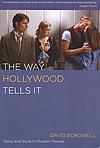
full sizeThis book consists of two essays focused on contemporary American cinema. The first essay considers the extent to which films of the last thirty years or so have diverged from storytelling models formulated during Hollywood’s studio era. The second essay analyzes visual style and is an expansion of the essay, “Intensified Continuity,” which appeared in Film Quarterly some years ago. Both essays tackle more general issues of continuity and change in Hollywood, try to dispute the idea of a “post-classical” Hollywood, and consider the role played by independent filmmaking. Films analyzed include Jerry Maguire, Memento, JFK, A Beautiful Mind, The Two Towers, and Two Weeks Notice. The Way Hollywood Tells It can be considered an essayistic sequel to some of my sections oof The Classical Hollywood Cinema (1985).
Read the online supplement to The Way Hollywood Tells It.
309 pages, 6 x 9 inches, 157 b/w photographs
April 2006 • The University of California Press
hardcover ISBN 0520232275 • paperback ISBN 0520246225 • downloadable
eBook • download PDF of introduction
[go
to Amazon]

Figures Traced in Light
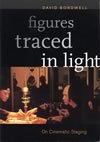
full sizeThis book develops and extends some of the arguments in the sixth chapter of On the History of Film Style. I consider how we might study cinematic staging, particularly ensemble staging, and take four major directors as examples of various staging strategies. The work of Louis Feuillade, Mizoguchi Kenji, Theo Angelopoulos, and Hou Hsiao‑hsien allows me to trace some staging devices across about 100 years of film history. More generally, Figures Traced in Light argues that we can profitably explain a lot about film style by considering the craft context within which filmmakers work, and the last chapter defends this argument against some criticisms it has received elsewhere.
I’ve added online supplements to the published chapters, with the advantage of color illustrations.
327 pages, 7 x 10 inches, 16 color illustrations, 536 b/w photographs
March 2005 • The University of California Press
hardcover ISBN 0520232267 • paperback ISBN 0520241975
[go
to Amazon]

Visual Style in Cinema: Vier Kapitel Filmgeshichte
Ed. Andreas Rost. Frankfurt: Verlag der Autoren, 2001.
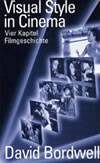 In June 1999, I was invited by the Cultural Office of Munich to present a series of lectures at the splendid Arri Kino. Each lecture drew upon a wide array of examples and concluded by concentrating on one or two films as exemplary of a trend in cinematic style: Griffith’s Battle of Elderbush Gulch, Sjöström’s Ingeborg Holm, Hawks’ His Girl Friday, Mizoguchi’s Life of Oharu, and Tykwer’s Run Lola Run. In June 1999, I was invited by the Cultural Office of Munich to present a series of lectures at the splendid Arri Kino. Each lecture drew upon a wide array of examples and concluded by concentrating on one or two films as exemplary of a trend in cinematic style: Griffith’s Battle of Elderbush Gulch, Sjöström’s Ingeborg Holm, Hawks’ His Girl Friday, Mizoguchi’s Life of Oharu, and Tykwer’s Run Lola Run.
Andreas Rost was host and organizer, and he went on, with the cooperation of Ingo Fliess of Verlag der Autoren, to edit and publish the talks in German. This little volume has a nifty design, with lovely pictures and a user-friendly layout.
[go
to Amazon]

Planet Hong Kong: Popular Cinema and the Art of Entertainment
Cambridge: Harvard University Press, 2000.
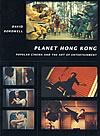
full sizeAn effort to propose a poetics of popular film, while also celebrating a tradition I love. It’s also a mix of academic film history and film analysis with a looser, more informal writing style. Writing it was quite hard, since the subject kept changing from week to week: new films, a fresh crisis in the industry, another batch of books and articles, a new wave of information bursting off the Net. But I hope both fans and nonspecialists find some of it worthwhile. Other Hong Kong pieces are noted in the articles section.
Translated into long form Chinese (Hong Kong: Arts Council Film Critics Society, 2001) and simplified Chinese (Beijing: Hainan, 2003). Italian readers might be interested in a journalistic essay, “Senza Inibizioni: Introduzione al cinema di Hong Kong,” Segno cinema no. 80 (July/ August 1996), pp. 12–14.
[go
to Amazon]

On the History of Film Style
Cambridge: Harvard University Press, 1997.
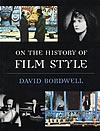
full sizeAnother venture into poetics, this time concentrating on international stylistics. It’s a book of historiography, reviewing three major trends in understanding the history of film style: the orthodox position that emerged in the 1920s (and still governs most history-writing); a counter-position that emerged with André Bazin’s generation in France during the 1940s and 1950s; and a modernist wave that emerged during the 1960s and 1970s, epitomized by the work of Noël Burch. A fourth chapter brings the story up to date, concentrating on “revisionist” work in early cinema (Charles Musser, Tom Gunning, Kristin Thompson, Ben Brewster, et al.). Each chapter offers some criticisms. The fifth chapter suggests studying the history of style as linked problems and solutions, and the approach is illustrated through a history of depth staging.
This is my most straightforward book, both in outline and
writing style. (Michael Wood kindly remarked that it was “often funny.”)
It could have drawn more explicitly on concepts I broached elsewhere, chiefly
ideas of narration and poetics; but I left the connections in the footnotes for
interested parties to follow up. On the History of Film Style was selected
as a Choice Outstanding Academic Book of 1998. An early version was “The
Power of a Research Tradition: Prospects for Progress in the Study of Film Style.“ Film
History 5, 4 (1994): 59–79. The book has been translated
into Korean (Seoul: Hanul, 2002) and Croatian (Zagreb: Croatian Film Clubs Association, 2005).
The Preface to the Croatian edition is online here.
[go
to Amazon]

Post-Theory: Reconstructing Film Studies
Anthology, co-edited with Noël Carroll. Madison:University of Wisconsin
Press, 1996.
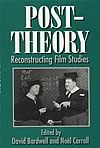
full sizeIt was inevitable, once my old friend Noël Carroll came to Madison’s philosophy department in 1991, that we’d wind up collaborating. This anthology was an effort to gather a range of work in film theory, film analysis, film history, and the philosophy of film which seemed not to fit into the agenda canonized in academic cinema studies. The field had become defined by anthologies claimed that poststructuralism, postmodernism, cultural studies, and multiculturalism was where the action was—a Big Theory that was best qualified to explain cinema. So this book tries to suggest that there are alternatives: analytic philosophy, cognitive theory, close analysis of films, social theory that recognizes transcultural affinities, and empirical history. We hoped to open a dialogue with what the discipline took as its leading edge. Several essays in Post-Theory have been translated into various Eeuropean languages.
[go
to Amazon]

The Cinema of Eisenstein
Cambridge: Harvard University Press, 1993. 2nd edition, Routledge, 2005.
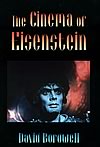
full sizeMy third book-length director study, again seeking to do several things at once. First, it gives an overview of Eisenstein’s cinematic work—the films he made, the theories he generated. Taking him as a director trying to fuse theory and practice, I analyze his theoretical writings and all of his films. Secondly, as usual, the book tries to put the director into a pertinent context. Traditionally he is thought of as Comrade Film Constructivist, cinema’s Rodchenko or Mayakovsky. But this doesn’t allow for what he did after 1930, except to consider it a sad decline into official art.
As with Ozu, I try to challenge received opinion. I treat Eisenstein as seeking to synthesize many artistic traditions, both avant-garde and academic. In my account, he becomes a “conservative Constructivist” and an avant-garde Socialist Realist. The “poetics of cinema” theme enters too, but in a different key. Eisenstein himself set out to create a poetics of cinema, particularly of film style, and so the book tries to delineate that and show how it still has value for us. The Cinema of Eisenstein is my only book to win an award; it won the 1993 Theatre Library Association Award for the outstanding book in film, broadcasting, or recorded performance. It has been translated into Chinese (Taipei: Yuan-Liou, 1995) and Spanish (Barcelona: Ediciones Paidós Ibérica, 1999). The second edition contains a new preface. Italian readers may wish to consult “La stilistica della scenografia nel tardo Ejzenstejn,” in Sergej Ejzenstejn: Oltre il cinema, ed. Pietro Montani (Venice: La Biennale diVenezia/ Edizioni Biblioteca dell’Immagine, 1991), pp. 138–145.
[go
to Amazon]

Making Meaning: Inference and Rhetoric in the Interpretation of Cinema
Cambridge: Harvard University Press, 1989.
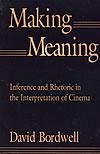
full sizeThis ought to have been the most controversial book I produced, but although many have dismissed what they take to be its conclusions, I’m aware of only one sustained critique (by V.F. Perkins). Making Meaning is about how we interpret films. (I thought about calling it Making Movies Mean, except Kristin pointed out to me that it might be taken as a manual for producing raw-edged action films.) How do we assign abstract significance to films, going beyond the “obvious” meanings and proposing ones that are “deeper”? The argument advances in three stages.
First, the book sketches a history of film interpretation, from the work of early critics through the rise of academic film studies in the 1960s and 1970s, ending in the great quantity of interpretive work that emerged in the 1980s. The second part of the book tries to answer the question of how interpretation works, treating it as a skill which can be mastered. I argue that meaning is indeed made, through a constructive process. Critics build up inferences and deploy the persuasive powers of language to arrive at conclusions permitted within the institution of criticism. My approach, then, tries to be at once psychological (drawing on cognitive psychology), social (treating cognitive schemata as socially approved meaning-making processes), and rhetorical.
The last stretch of the book is more polemical, arguing that by now we have all mastered these skills and we ought to move toward cultivating others—chiefly those of scrutinizing form and style. I argue that the most robust impulse in this direction is the tradition of film poetics. Put another way: interpretation has become easy, but analysis is still hard. This conclusion was misunderstood in a remarkable variety of ways: I wasn’t saying that a complete approach to film could do without interpretation, nor that it wasn’t worth doing (just that it has become predictable). Given all the things we might study in films, contemporary discourse seems very narrow.
The book has been translated into Chinese (Taipei: Yuan-Liou, 1995) and Spanish (Barcelona: Paidós Ibérica, 1995). Excerpts are available in Polish in Interpretacja dziela filmowego, ed. Wieslawa Godzica. (Cracow: Jagiellonian University Press, 1993), pp. 13–32.
[go
to Amazon]

Ozu and the Poetics of Cinema
London: British Film Institute; Princeton: Princeton
University Press, 1988. Available as online PDF.
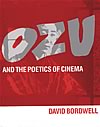
full sizeAnother study of a director I love. Every time I write a book on a director,
I try to give it at least two strata: one for readers interested in that director,
and another addressing broader issues. For Dreyer, the plan was to understand
the history of international film style through the work of a director who went
his own way. For Ozu I was more ambitious: I went for three layers.
First, I wanted to do a thorough study of a director’s use of the medium,
tracing the way narrative form and film style interact to create the particular
quality of his films. This meant arguing against many received opinions: that
Ozu is a highly conservative filmmaker, using a simple style and slice-of-life
plotting; that his camera represents a seated Japanese observer; that he forged
his style apart from norms circulating in international film culture. Here, as
with Dreyer, I tried to capture the experimental aspects of this
“traditional” director. (I often find myself looking for
the traditional aspects of experimentalists and the experimental aspects of traditionalists.)
I also sought to show how Ozu was a keen observer of Western cinema and borrowed
freely from it, if only to end up doing things very differently.
Secondly, I tried to provide a historical explanation for Ozu’s
work. I brought in the obvious sociopolitical history, which is very important,
but (again, as with Dreyer) I tried to insert him into the aesthetic history
of the medium, considering how he worked with and against its norms. Finally,
and perhaps most ambitiously, the book tries to illustrate how a systematic
“poetics of cinema”—a theory of how films are made
to achieve certain effects—could shed light on a single director; hence
the title.
Ozu and the Poetics of Cinema consists of two parts. The
first provides overviews of Ozu’s career from several different angles.
It looks at his biography, his place in the Japanese film industry, his methods
of storytelling, his use of film techniques, and his films’ social and
ideological implications, all the while trying to illustrate how an approach
grounded in poetics can help us understand him in ways different from earlier
accounts. The second part discusses each film singly, taking up one or two issues
raised by the movie but also trying to pick up and develop strands stated in
the first part.
Ozu and the Poetics of Cinema has been translated into Japanese (Tokyo:
Seido, 1992).
[go
to Amazon]

Narration in the Fiction Film
Madison: University of Wisconsin Press, 1985.
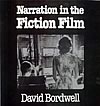
full sizeHow do films tell stories? This book argues that the best way to answer this
question is not to assume that they are simply novels or plays on celluloid.
Although film borrows from other media, it has distinctive tools for telling
tales.
The first part of the book criticizes
“mimetic” theories (which liken film to plays or paintings)
and “diegetic” theories (which treat cinema as a language or a literary
medium). The second part of the book lays out key concepts for analyzing narration
in any medium (fabula, syuzhet, style). This part also argues that a cognitive
approach to narrative best captures the main features of filmic narration. The
third part of the book argues that across the history of cinema several traditions
(“norms”) of storytelling have emerged, and viewers who have mastered
those norms are able to understand and enjoy films in those modes. The norms
discussed are “classical” narration,
“art-cinema” narration, and
“historical-materialist” narration. The book concludes by
examining the ways in which Jean‑Luc Godard challenges these norms, and indeed
many of the concepts in the book as a whole. Narration in the Fiction Film has
been translated into Spanish (Barcelona: Ediciones Paidós Ibérica,
1996); Hungarian (Budapest: Hungarian Film Institute, 1996); Persian (Tehran:
Farabi Cinema Institute, 1998); and Chinese (Taipei: Yuan Liou, 1999).
[go
to Amazon]

The Classical Hollywood Cinema: Film Style and Mode of
Production to 1960
Written in collaboration with Janet Staiger and Kristin Thompson. London:
Routledge and Kegan Paul; New York: Columbia University Press, 1985.
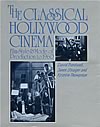
full sizeDuring the 1970s and early 1980s film scholars of various stripes were referring
to a “classic”
or“classical” cinema, centered in the U.S. studio system. In
this very long, densely printed, heavily footnoted book, two colleagues and I
tried to describe, analyze, and explain what this concept might mean. The book
traces the emergence of a distinct film style, based on principles of staging,
editing (the “continuity”
system), and storytelling, that soon became just
“normal” moviemaking. According to the book, a range of technological
and institutional factors shaped this style and maintained it over the decades.
We stop our coverage in 1960, but the style is still in place today (with some
modifications). Thompson’s sections concentrated on silent film; Staiger’s
on the film industry, treated as a mode of production; mine range from narrative
theory and stylistics to technology.
It was selected as a Choice Outstanding Academic Book of 1985 and has been
translated into Spanish (Barcelona: Ediciones Paidós Ibérica, 1997).
[go
to Amazon]

The Films of Carl-Theodor Dreyer
Berkeley: University of California Press, 1981. Out of print.
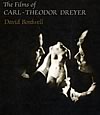
full sizeThis was an effort to understand a director I admire by placing him within
the history of film style and form. The book argues that Dreyer explored several
avenues of film technique in a way that has affinities with filmic modernism
and modernism in adjacent arts. I also suggest that his methods of storytelling
involve transformations of techniques he inherited from Scandinavian silent cinema
and from the theatre. Using a comparative method, and much influenced by narratologists
like Roland Barthes, the book tries to track Dreyer in relation to the development
of mainstream film style.
[go
to Amazon]
|



